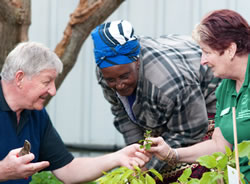 The Department of Human Services (DHS) has highlighted how its Social Impact Framework was helping service providers assess how well a program was meeting evidence-based conditions for making social impact.
The Department of Human Services (DHS) has highlighted how its Social Impact Framework was helping service providers assess how well a program was meeting evidence-based conditions for making social impact.
Sharing details of the Framework released in January, the Department said it developed it in a partnership with the Australian Alliance for Social Enterprise (TAASE) at the University of South Australia (UniSA).
Executive Director of Community Investment and Support at DHS, Ruth Ambler said the Framework represented a significant shift in thinking about how Government assessed and optimised the impact its investments have in the community and how to build partnerships with the non-Government sector.
Ms Ambler said the three main criteria of the Framework included aligning the service/program/initiative to clearly defined purposes and outcomes; meeting best practice service design criteria; and delivering it through a partnership with service providers.
She said the three elements were underpinned by the Social Impact Framework Assessment Tool, which covered a range of discussion points designed to spark deeper shared understanding of how a program, initiative or service was generating impacts for individuals, families and communities.
“The aim is to enable a shared understanding of what makes a quality service, so that service delivery is more responsive and effective in generating social impact,” Ms Ambler said.
“The whole Framework demonstrates the values of collaboration, accountability and focus on outcomes.”
She said the Framework was not designed to be a compliance tool but was intended to provide greater value than simple ‘yes’ or ‘no’ answers.
The DHS’s 15-page Framework can be accessed at this PS News link and the 19-page Assessment Tool at this link.











